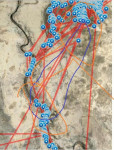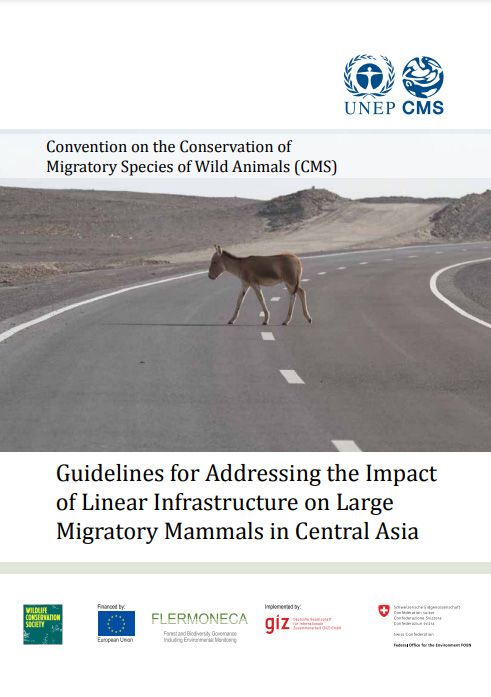Successful Efforts to Resettle Bukhara Deer under the Lead of WWF's Central Asian Programme

Bukhara Deer in the Tugai Forest © Natalia Marmazinskaya
Since the development of the Work Programme for the Bukhara Deer (2021-2026) under the CMS’ Bukhara Deer MOU (WP), the WWF Central Asian Program, in cooperation with national government agencies and experts, has been working on implementing high priority measures 7.4, 9.2 and 10.1, aiming to resettle Bukhara Deer. These activities will contribute to reducing overpopulation of some reserves, where the number of the animals exceeds the carrying capacity of the habitat and will enable Bukhara Deer to recolonize its former habitats.
Successful efforts under the lead of WWF Central Asian Programme to establish a Bukhara Deer population in its former habitat of the Ili-Balkhash Reserve continue (WP 7.4). Methods of immobilization, dose charts of the drugs, the optimal mode of transportation and adaptation periods were trialed and optimized on the territory of the Karachingil game management enterprise, from which the animals are taken for translocation to the reserve. These methods are also applicable to resettlement of Bukhara Deer elsewhere, e.g. from the Badai-Tugai population in Uzbekistan in accordance with the WP 10.1.
The first five Bukhara Deer were released in Ili Balkhash Reserve in 2019, in 2020 fourteen adult deer and three fawns followed.
Further translocation activities (including immobilization in Karachingil, transportation and release) were carried out in the winter of 2020-2021. As a result, 61 deer were released into the wild in July 2021, which is a record number for one year. Camera traps were installed to observe the released animals. In addition, nine animals were satellite collared to enhance control over the deer population.
According to preliminary estimates, taking into account the releases in 2021 and the number of newborns, despite some natural mortality (wolves), there are already almost 100 deer in the Ili Balkhash Reserve. The collars make it possible to track the movements of deer, their regular returns to the enclosure where they have been kept during the adaptation period, and the gradual development of the use of the surrounding ecosystems by the animals; changes in habitat use due to summer fires in the reeds, due to fluctuations in the water supply and vegetation changes.
At the end of 2021, deer immobilization in Karatchingil continued as planned, but was interrupted in January due to the events in Kazakhstan. After obtaining the permission to continue immobilization and night-time transportation of animals, the process in Karachingil and transportation to the enclosures of Ili-Balkhash for adaptation were resumed
WWF Central Asian Programme also undertook activities in other parts of the Bukhara Deer range. In particular, in accordance with WP 9.2, a small CEPF-WWF grant was allocated for a group of researchers in Turkmenistan to conduct a detailed survey of the Dzharguzer massif, assess the number and state of the Bukhara Deer in this area and to prepare proposals for the optimal management of this population.
On 22 February 2022 WWF and the State Committee for Nature Protection of the Republic of Uzbekistan signed an agreement on the joint implementation of environmental projects. An essential component of this Agreement is the work on the resettlement of the Badai-Tugai population to the tugai forest areas suitable for Bukhara Deer, taken under protection by the State. WWF and the Succow Foundation donated two injectors to Uzbekistan’s government for immobilization of animals that are to be resettled. In 2022, it is planned to conduct trainings on immobilization techniques for employees and specialists of the Lower Amu Darya Biosphere Reserve, which will enable local experts to carry out resettling of Bukhara Deer in Uzbekistan.
Last updated on 04 April 2022









